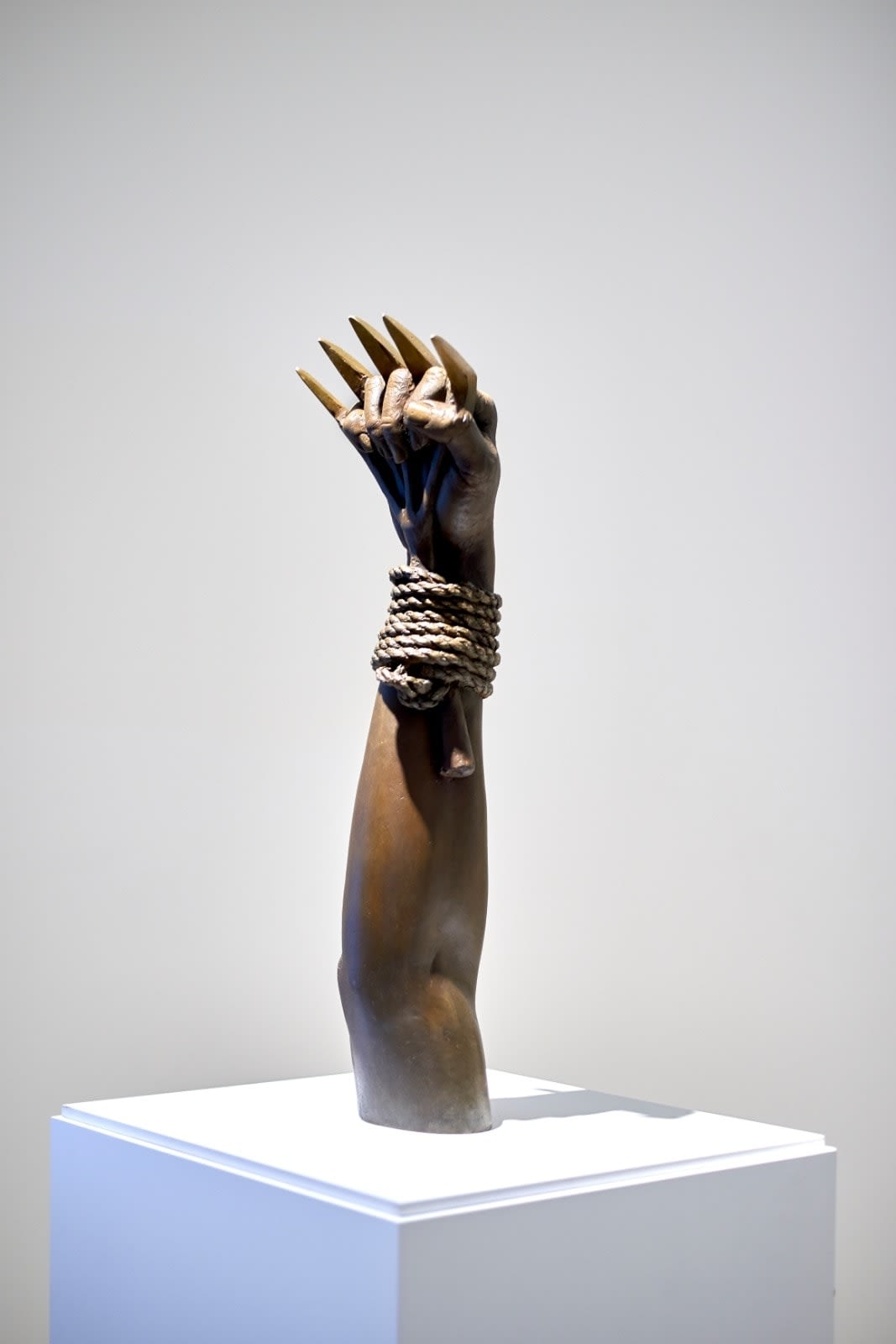

Hank Willis Thomas United States, b. 1976
22 1/16 x 6 x 6 in
Originally inspired by his punctum series, Resistance recreates archival source material and images
found in visual culture, in this case Popular Science Magazine from 1943. Thomas uses this concept to
select or reframe areas of the image which he then turns into three dimensional, photo-derived
sculptures. By isolating certain aspects within an image, Thomas is concerned with what is left in and
out of the frame and the forms of aesthetic information that can be derived from isolating parts of an
image. He takes segments of the photograph and turns them into sculptures by way of using different
media to articulate photographic elements.
This sculpture draws upon the history of the Leopard (Anyoto) Society, a secret society active from
1890-1935 across west Africa. Although it was a society established for political emancipation and
empowerment as a way to circumvent colonialist rule, the Leopard Society is depicted by-and-large as
violent, evil, and sexually promiscuous in popular culture and the Euro-centric imagination, which can be
traced through the dissemination of the Tarzan stories, Tintin comic, Disney motion pictures, and
beyond. By isolating the claw of the “leopard” individually, Thomas draws attention to its symbolism of
power, unity, and community.

